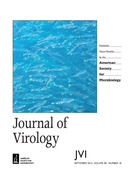Ver ítem
- xmlui.general.dspace_homeCentros e Institutos de InvestigaciónCICVyA. Centro de Investigación en Ciencias Veterinarias y AgronómicasInstituto de VirologíaArtículos científicosxmlui.ArtifactBrowser.ItemViewer.trail
- Inicio
- Centros e Institutos de Investigación
- CICVyA. Centro de Investigación en Ciencias Veterinarias y Agronómicas
- Instituto de Virología
- Artículos científicos
- Ver ítem
Systemic Foot-and-Mouth Disease Vaccination in Cattle Promotes Specific Antibody-Secreting Cells at the Respiratory Tract and Triggers Local Anamnestic Responses upon Aerosol Infection
Resumen
Foot-and-mouth disease (FMD) is a highly contagious viral disease affecting biungulate species. Commercial vaccines, formulated with inactivated FMD virus (FMDV), are regularly used worldwide to control the disease. Here, we studied the generation of antibody responses in local lymphoid tissues along the respiratory system in vaccinated and further aerosol-infected cattle. Animals immunized with a high-payload monovalent FMD vaccine developed high titers
[ver mas...]
Foot-and-mouth disease (FMD) is a highly contagious viral disease affecting biungulate species. Commercial vaccines, formulated with inactivated FMD virus (FMDV), are regularly used worldwide to control the disease. Here, we studied the generation of antibody responses in local lymphoid tissues along the respiratory system in vaccinated and further aerosol-infected cattle. Animals immunized with a high-payload monovalent FMD vaccine developed high titers of neutralizing antibodies at 7 days postvaccination (dpv), reaching a plateau at 29 dpv. FMDV-specific antibody-secreting cells (ASC), predominantly IgM, were evident at 7 dpv in the prescapular lymph node (LN) draining the vaccination site and in distal LN draining the respiratory mucosa, although in lower numbers. At 29 dpv, a significant switch to IgG1 was clear in prescapular LN, while FMDV-specific ASC were detected in all lymphoid tissues draining the respiratory tract, mostly as IgM-secreting cells. None of the animals (n = 10) exhibited FMD symptoms after oronasal challenge at 30 dpv. Three days postinfection, a large increase in ASC numbers and rapid isotype switches to IgG1 were observed, particularly in LN-draining virus replication sites already described. These results indicate for the first time that systemic FMD vaccination in cattle effectively promotes the presence of anti-FMDV ASC in lymphoid tissues associated with the respiratory system. Oronasal infection triggered an immune reaction compatible with a local anamnestic response upon contact with the replicating FMDV, suggesting that FMD vaccination induces the circulation of virus-specific B lymphocytes, including memory B cells that differentiate into ASC soon after contact with the infective
[Cerrar]

Autor
Fuente
Journal of Virology 89 (18) : 9581-9590. (September 2015)
Fecha
2015-09
ISSN
0022-538X
1098-5514
1098-5514
Formato
pdf
Tipo de documento
artículo
Palabras Claves
Derechos de acceso
Abierto
 Excepto donde se diga explicitamente, este item se publica bajo la siguiente descripción: Creative Commons Attribution-NonCommercial-ShareAlike 2.5 Unported (CC BY-NC-SA 2.5)
Excepto donde se diga explicitamente, este item se publica bajo la siguiente descripción: Creative Commons Attribution-NonCommercial-ShareAlike 2.5 Unported (CC BY-NC-SA 2.5)


